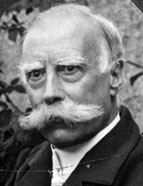

His integrity, manifested in his political and religious positions, his knowledge of public administration and the open view of the world he had acquired through his positions, coupled with an already considerable literary work of renowned merit, as we will see below, may have contributed to D. Carlos invit ing him, in 1906, to teach Portuguese History and Literature to Prince Luís Filipe. The texts of these lessons have reached us (Tomás de Melo Breyner, ‘O visconde de Castilho mestre de um príncipe ’ [The viscount of Castilho, master of a prince] , In memoriam , pp. 167-176).
As mentioned above, Júlio de Castilho became known for his vast and varied body of work. He made his debut at the age of 13 with Primeiros versos [First verses] in an almanac in 1854, without ever ceasing to cultivate the poetic genre, which he used in other literary fields, with its greatest expression in As Manuelinas [The Manuelines ] , an evocative 16 th - century songbook, ‘where the salty breeze of the 1500s permeates’ (Matos de Sequeira, Elogio Histórico [Historical Eulegy ] , p.373). In terms of prose, he was a biographer, playwright, novelist, memoirist, translator, Latinist , and philologist. He also proved to be a polemicist when he intervened in the ‘ Questão Coimbrã ’ [The Coimbra question] , in connection with the debate on Good sense and good taste with the booklet , ‘ O Senhor António Feliciano de Castilho e o Senhor Antero de Quental’ [ Mr.António Feliciano de Castilho and Mister Antero de Quental] (1865), a text in defence of his father. But the greatest tribute to his father was the Memórias de Castilho [Memoirs of Castilho] , published in two volumes. This work of filial devotion is the genesis of what would become his role as an olisipographer . As part of his research into erecting a monument to his father ’ s memory, he wrote Lisboa Antiga : O Bairro Alto [Old Lisbon: The Bairro Alto] (1879), an evocation of the area where his father had lived and he had been born. Due to the great interest it aroused in the public, the work was reissued and expanded, becoming the first of several volumes, entitled A Lisboa Antiga / Bairros Orientais [The old Lisbon/ Oriental Neighbourhoods] , completed in 1890. He went on to publish A Ribeira de Lisboa [The Lisbon riverside] (1893), in which he traced the city ’ s centuries-old history from the riverfront to the Santos-o-Velho neighbourhood. These studies consecrated him as the founder of olisipography , as he was the first researcher to systematically and extensively analyse the history of Lisbon.
This work is financed by national funds through FCT - Foundation for Science and Technology, I.P, in the scope of the projects UIDB/04311/2020 and UIDP/04311/2020.
